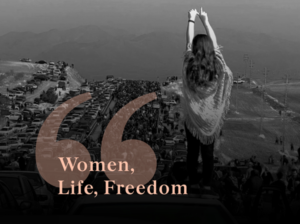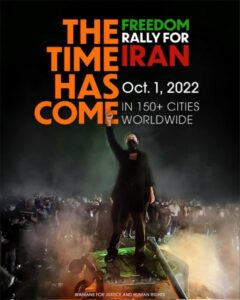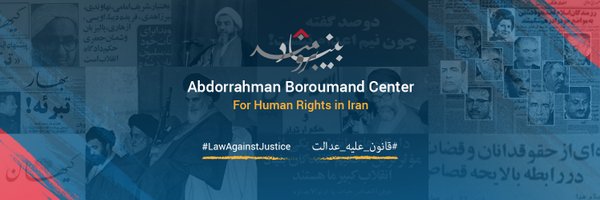Iran’s 6-2 loss to England in the football World Cup has prompted rebukes of the regime and further protests, Bloomberg reports.
As their country’s national anthem was played prior to the game, Iran’s players appeared silent and stone-faced, declining to sing in what was widely seen as an acknowledgment of — or even a show of solidarity with — a popular uprising unfolding at home, the Post adds.
Iranian security forces used heavy gunfire against protesters in a Kurdish town in the country’s west on Monday, killing at least five during an anti-government protest that erupted at the funeral of two people killed the day before, activists said.
 “Women, Life, Freedom,” a new study by the Tony Blair Institute for Global Change is suggesting that there is currently an “overwhelming” support for a new regime in the country. The institute’s leading Iran expert, Kasra Aarabi, told DW that the current protests are no longer about reform.
“Women, Life, Freedom,” a new study by the Tony Blair Institute for Global Change is suggesting that there is currently an “overwhelming” support for a new regime in the country. The institute’s leading Iran expert, Kasra Aarabi, told DW that the current protests are no longer about reform.
“This is about the downfall of Khamenei’s regime,” he said. The study also shows that 70% of Iranian men and 74% of women are opposed to mandatory hijabs.
The evidence is overwhelming, Tony Blair writes. The Iranian people have undergone a secularisation and liberalisation faster than any society in the Islamic world, despite having lived under the rule of Islamists for decades.
Protests against the compulsory hijab are about regime change, the paper states. Of those who are against the compulsory hijab, 84 per cent also want to live in a secular state. As a secular state is impossible under the Islamic Republic, this is indicative of the demand for regime change among the people.
 Iranian protesters forming alliances across the political spectrum could signal a new phase in the upsurge, which has prompted experts to consider whether the protests could prompt another ‘Arab Spring.’
Iranian protesters forming alliances across the political spectrum could signal a new phase in the upsurge, which has prompted experts to consider whether the protests could prompt another ‘Arab Spring.’
Iranian lawmakers have proposed banning student protesters from traveling abroad for 10 years as the Islamic republic struggles to suppress the biggest show of dissent in years, RFE/RL adds.
The Fars news agency, which is affiliated with Iran’s Islamic Revolutionary Guards Corps (IRGC), said that in addition to members of parliament some “experts” played a role in the preparation of this plan. No explanation was given about the “experts,” but some observers say they appear to be agents of the intelligence and security institutions.
Even if the current unrest comes to an end, protests and uprisings may recur if the government fails to solve Iran’s problems, says former IRGC Commander Yahya Rahim-Safavi, an adviser to Supreme Leader Ali Khamenei. He spoke on the same day that reformist commentator Hamid Reza Jalaeipour said: “Iran has not yet entered a revolutionary situation, but if the current unrest continues, the country will move toward a revolutionary phase.”
An interview with a former official published by Iran’s Tasnim News Agency is revealing in the sense that it shows a self-critique of the regime and reflects the Islamic Republic’s concerns that it is on the verge of alienating an entire generation, the Jerusalem Post’s Seth J. Frantzman reports.
 After a “groundbreaking” meeting with French President Emmanuel Macron, activist and historian Ladan Boroumand called on European countries to “do what is necessary” to stop Iran’s repressive regime, she explained to Le Monde. On November 6, 227 Iranian legislators out of 290 called for the execution of arrested protesters, and Ms. Boroumand urged European leaders to prevent these killings. “We ask that the political prisoners be released and that Iranians find a space to express themselves freely,” said the co-founder of the Abdorrahman Boroumand Center.
After a “groundbreaking” meeting with French President Emmanuel Macron, activist and historian Ladan Boroumand called on European countries to “do what is necessary” to stop Iran’s repressive regime, she explained to Le Monde. On November 6, 227 Iranian legislators out of 290 called for the execution of arrested protesters, and Ms. Boroumand urged European leaders to prevent these killings. “We ask that the political prisoners be released and that Iranians find a space to express themselves freely,” said the co-founder of the Abdorrahman Boroumand Center.
At first glance, it appears that, since 1979, the government has succeeded in putting down one protest after another, she wrote for the Journal of Democracy. But those victories are illusory. Each one has triggered tectonic changes in the cultural fabric of Iranian society—changes that have slowly but steadily sapped the ideological foundations of the Islamic regime.
 The longer length of unarmed mobilization is associated with higher chances of democratic durability and also growth of democratic quality, argues the author of Popular Politics and the Path to Durable Democracy.
The longer length of unarmed mobilization is associated with higher chances of democratic durability and also growth of democratic quality, argues the author of Popular Politics and the Path to Durable Democracy.
Iran’s current protest movement “has a lot more potential to actualize and more people need to join, if this movement actually wants to change the government,” he tells Democracy Paradox. “But we still don’t have hundreds of thousands protesting. We certainly don’t have millions protesting on a day or in a week.”
Iran’s protest movement should learn a lesson from Egypt’s abortive Jasmine Revolution, Kadivar suggests – the duration of protests matter.
“One benefit of a longer period of protest mobilization is organization-building. This did not happen for the non-Islamist opposition. So, we had a very uneven organizational balance in the Egyptian opposition,” he notes. Once Mubarak was gone, the Muslim Brotherhood “was able to translate their organizational power on the streets to the ballot boxes.”
 This means that Iran’s protest movement “needs to increase their ranks and bring in different groups of people,” Kadivar adds. The Islamic Republic is a strong regime, with the benefit of oil revenues, a robust repressive apparatus, their own support base to mobilize, and alliances with other authoritarian powers.
This means that Iran’s protest movement “needs to increase their ranks and bring in different groups of people,” Kadivar adds. The Islamic Republic is a strong regime, with the benefit of oil revenues, a robust repressive apparatus, their own support base to mobilize, and alliances with other authoritarian powers.
Indeed, Iran’s Ayatollah Ali Khamenei is helping Putin in Ukraine, says Iranian American activist Masih Alinejad, The Washington Institute’s 2022 Scholar-Statesman Honoree.
“Dictators around the world help each other. Believe me, dictators are more united than democratic countries. From Russia to China to Iran to Venezuela, and everywhere,” she tells the Institute’s Robert Satloff. American, British, German and French citizens are in prison in Iran, “all being used like bargaining chips to get a nuclear deal,” but the democracies are failing to unite and downgrade diplomatic relations with the Islamic Republic.
In July, police arrested Khalid Mehdiyev, of Yonkers, New York, after he was found prowling around Alinejad’s home in Brooklyn with an AK-47 and nearly 100 rounds of ammunition, Graeme Wood writes for the Atlantic (below).
 One year before, the Department of Justice announced that it had thwarted a plot to kidnap Alinejad, take her by sea to Venezuela, and then spirit her to Iran for imprisonment and possible execution. She now lives in hiding, but she told me she doesn’t think about threats to her safety. “I don’t know why. I’m just missing this,” she said, pointing at her head, at the absent neuroanatomical structure that causes normal people to be afraid of being shot dead. “I don’t have this fear.”
One year before, the Department of Justice announced that it had thwarted a plot to kidnap Alinejad, take her by sea to Venezuela, and then spirit her to Iran for imprisonment and possible execution. She now lives in hiding, but she told me she doesn’t think about threats to her safety. “I don’t know why. I’m just missing this,” she said, pointing at her head, at the absent neuroanatomical structure that causes normal people to be afraid of being shot dead. “I don’t have this fear.”
Instead of rallying Iranians around the flag, this year’s World Cup could turn into a Pyrrhic victory for the regime given its dire political situation at home, adds analyst Omer Carmi.
Analysts and activists Behnam Ben Taleblu, Cyrus Forum’s Mariam Memarsadeghi and Barbara Slavin debate where the anti-regime protests are going in Iran (below).
“For years and years, I’ve been ignored by many activists and analysts outside Iran,” @AlinejadMasih tells @TheAtlantic‘s @gcaw. “I don’t have this fear.”https://t.co/Qg9uJW8Jw2
— Democracy Digest (@demdigest) November 22, 2022







